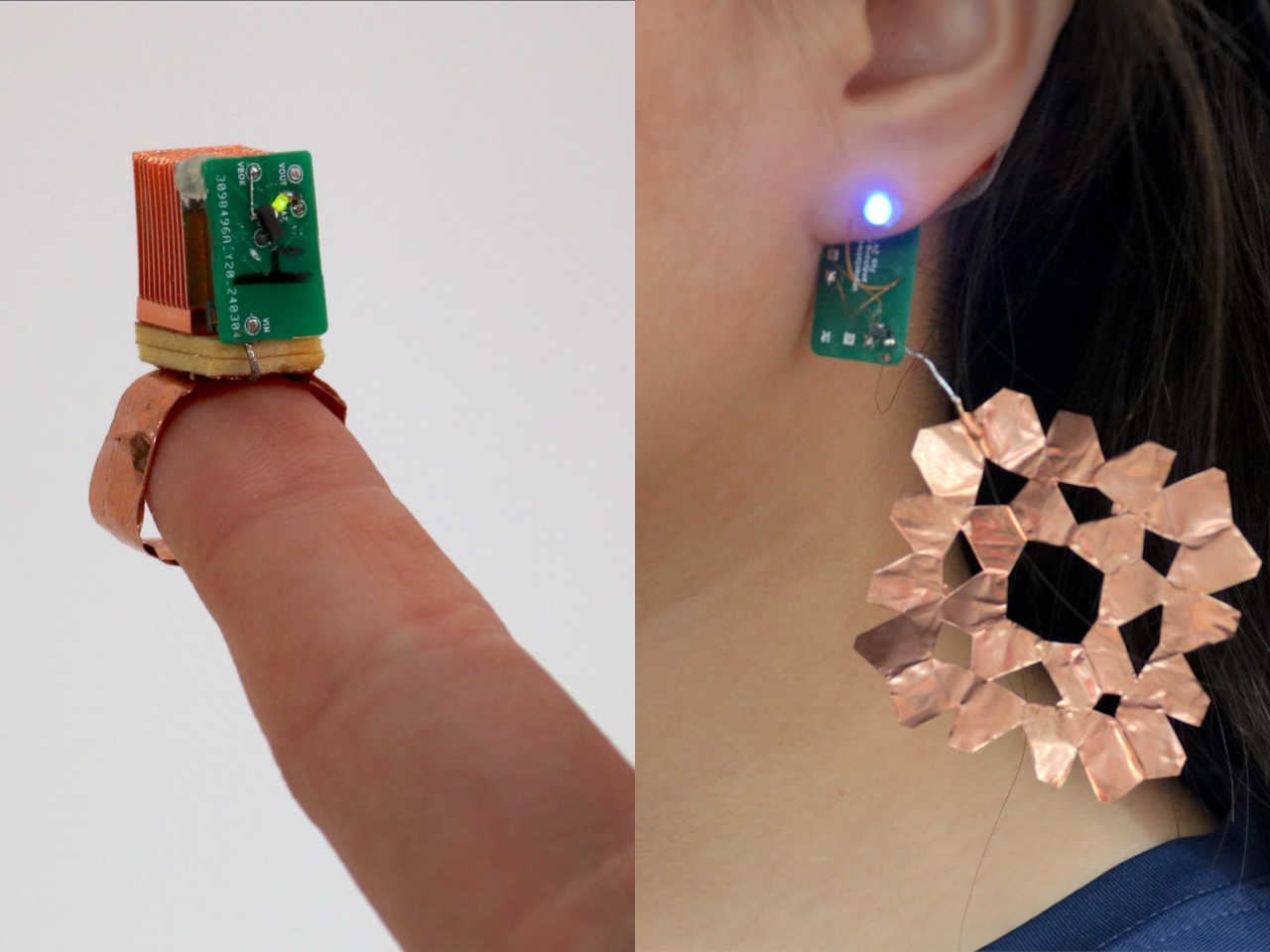‘Obsessively Tracking My Fitness Data Was Ruining My Life. Here’s How I Learned to Chill TF Out’
"Eventually, I realized that the very data that was supposed to help me improve my health was starting to become harmful."
When I started training for my first half marathon nearly 18 years ago, I didn’t even own a simple Timex watch ($35). I followed handwritten, photocopied maps to navigate group training runs through hilly Atlanta neighborhoods and had zero insight into data like my heart rate, stride length, or pace.
Fast forward nearly 20 years and more than 200 races later, and I now have 24/7 access to a dizzying array of metrics—heart rate variability, stress level, sleep stages, and more—thanks to not one but two personal fitness trackers: a Garmin Fenix 6S ($700) and a Whoop band ($239). These are just two of dozens of devices designed to help consumers optimize and track wellness data—but is this gamification of our health healthy? Yes and no, says Alissa Paladino, CPT, an Atlanta-based certified personal trainer.
“Fitness trackers provide accountability and motivation and can give awareness and important insight into your habits,” Paladino says. “People can gain a lot of confidence and self-esteem when they see whatever metric they are tracking improve, whether that’s a daily step count, weekly active minutes, or running pace and mileage.”
This was my exact experience when I got my first Whoop band in 2019. I learned that I was only sleeping six hours (if that) a night. So I started limiting my evening screen time, cutting back on my alcohol consumption, and using a meditation app to wind down at night (all good things) and my sleep improved dramatically. All of these led to a higher recovery “score”—a number from 0 to 100 based on the quality and duration of sleep, heart rate variability (HRV), resting heart rate, and stress.
At the time, I was in my early 40s and entering perimenopause—the hormonal transition leading to menopause and the end of menstruation—and all of this sophisticated fitness data felt like a hack to combat performance decline. And for a while, it did.
As I made lifestyle changes to get better sleep and reduce my stress, my performance improved. My running paces and race times started dropping. I had more energy during the day and started landing writing assignments with dream publications. Data like high resting heart rate and elevated skin temperature even alerted me to illnesses like food poisoning and everyday colds, which reminded me to take a step back from training instead of pushing through like I would have before. I rearranged workouts and long runs to optimize high recovery days and stuck to yoga and Pilates on lower ones. And these habits only intensified during the pandemic, when I had unlimited time and a flexible schedule to “optimize” my health.
I realized that the very data that was supposed to help me improve my health was starting to become harmful.
But even a few years after shelter-in-place orders were lifted and I was fully vaccinated (and boosted), my so-called “healthy” rituals—no meals after 6 p.m., lights out at 9 p.m. almost daily naps to hit my “sleep need,” minimal alcohol—started to become borderline obsessive.
I was distraught anytime I got a “red” recovery or got sick, blaming myself for not following my healthy rituals or putting in the work to get the “right” numbers. I panicked if I had to race or do a hard workout on a “bad” day, which of course, put me in a negative mental state and set me up to fail. I continued to isolate myself from other people, turning down invitations for events I deemed “too late,” skipping concerts I was looking forward to attending, checking metrics multiple times in the middle of the night—and then getting even more anxious about the quality of my sleep.
Eventually, I realized that the very data that was supposed to help me improve my health was starting to become harmful. And I’m not alone. “For some people, the amount of data and constant access to [fitness trackers] can start to feel overwhelming, and relying too heavily on external feedback can lead to losing touch with your own internal cues and cause anxiety and stress,” Paladino says.
And while I didn’t ditch my fitness trackers altogether, I eventually learned to do what I had done all those years ago when I started running and even a mile seemed impossible—I started listening to my body.
How I learned to improve my relationship with fitness data—and chill out
1. Go analog
These days, when I’m traveling internationally, returning to training after an illness, or just having a late (for me) night out with friends, I take off the fitness gadgets and leave them at home (plus, nothing ruins the look of a fancy dress more than a bulky running watch!). Same if I’m out walking my dogs or taking a Pilates class—I want to be able to tune into my body and surroundings, not worry about how many calories I’m burning.
If you don’t want to go completely analog, Paladino recommends doing the occasional workout without a watch. “Move by feel, listen to your body, and you may be surprised how freeing and enjoyable it feels,” she says.
And if you still want access to data but don’t want to stress about it in the moment, my personal hack: Start your watch and leave it on elapsed time, or open your fitness app, then stash your phone in your pocket. That way, you’ll still have all the metrics after your workout.
2. Set boundaries
Atlanta-based psychotherapist and mental health coach Deana Panza, LPC, RYT recommends setting boundaries with how often you engage with fitness information, whether that’s limiting time on fitness apps like Strava or only reviewing metrics once or twice a week.
“I have seen clients utilize the blood sugar data that they gather from whatever app and system they use and automatically attribute it to their diet,” she says. “And while that can play a role, so can hormones, sleep, and other factors, so it’s important to look at the full, more holistic picture over time,” she says.
Now, I keep my phone in another room at night and often don’t check my sleep data until later in the day so it doesn’t impact how I approach my work—or workout. And unless I feel really sick, I try not to stress about a single day of “off” metrics. But if I notice poor quality sleep or a high resting heart rate for several days in a row, I adjust my behavior by skipping workouts or prioritizing sleep.
3. Pick your metrics
While my Garmin Fenix 6S is packed with information—heart rate, body temperature, even a “training status” that alerts me when an activity is “unproductive”—I’ve learned to ignore metrics that don’t matter to me and remove them from display settings.
Paladino agrees. “I like to see my pace and distance during runs and my daily step count, so I don’t wear [a device] to sleep, I don’t pay any attention to the heart rate data, I ignore when it tells me I am stressed, I don’t even know how it is calculating my VO2 max nor do I care,” she says. “Basically, I extract from it the metrics that are meaningful to me, and ignore the rest.”
4. Listen to your body
I’ve had days when all the metrics point to a “good” recovery and felt like complete trash during a workout, and other days when the numbers are completely off, and I’ve felt amazing. “All of the information and all of the technology that we have at our fingertips all ask us to continue to focus on the information around us instead of the information within us,” says Panza.
So, if you feel sick or tired, take it easy or rest. If you feel rested and the numbers say otherwise, trust your body and get moving instead. And realize that one day of missing your step goal or Peloton streak or staying out late to celebrate with friends won’t derail your long-term fitness goals. But obsessing about those things absolutely will.
What's Your Reaction?



























_Vladimir_Stanisic_Alamy.jpg?#)
























![Kicked Out Of His Seat—Delta Passenger Forced To Move For A Dog [Roundup]](https://viewfromthewing.com/wp-content/uploads/2024/12/delta_dog_in_bulkhead-transformed.jpg?#)































